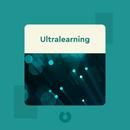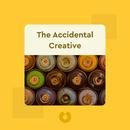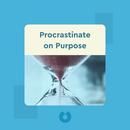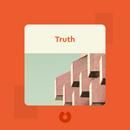Ultralearning: Accelerate Your Career, Master Hard Tasks and Outsmart the Competition
Your highlights:
What’s in it for me? Get the lowdown on how to master hard skills with ease.
Ultralearning is an aggressive, self-motivated approach to learning that enables people to quickly and efficiently master difficult skills. By taking this approach to learning, they become ultralearners. Their feats can seem intimidating at first – think along the lines of learning a new language in less than three months. But the truth is that anyone can adopt the ultralearning strategy and see results
13 February, 2021 07:13
Share
Ultralearning is the smart, strategic way to skill up for personal fulfillment and professional advantage.
usher
13 February, 2021 07:14
Share
Ultralearning projects are self-directed, challenging and time-consuming. Just look at the ultralearning project devised by Eric Barone. Most successful computer games are created by teams of professionals with huge budgets. Barone, an IT graduate working as a theater usher, decided to create one completely on his own. Over five years, Barone refined his game’s mechanics through intensive trial and error. Along the way, he taught himself pixel art, music composition, sound design and story writing.
13 February, 2021 07:14
Share
Your ultralearning project might not land you in the pages of Forbes magazine, but it can bring ‘unrealistic’ dreams, like learning French or mastering watercolor painting, within reach. Beyond being a path to personal fulfillment, though, ultralearning can help you hone your professional edge. And staying competitive professionally has never been more urgent.
13 February, 2021 07:15
Share
As medium-skilled jobs are threatened by automation, workers need to adapt, upskill and retrain to stay competitive. In the new professional landscape, the most desirable workers have hybridized skill sets: librarian/data analyst, architect/textile designer, accountant/Mandarin speaker. Ultralearners can diversify their skill sets without taking time off work to pursue further education or qualifications.
13 February, 2021 07:15
Share
Metalearning is a crucial, yet overlooked, step for reaching a big-picture understanding of your field.
metalearning: the process of learning how to learn. The idea here is that you shouldn’t start by absorbing information at random. You should first establish how information is structured in your chosen field. For example, the writing system of Mandarin Chinese isn’t just a bunch of random characters. Instead, the characters are organized by radicals, which are visual markers that express the relationships between those characters. So if you were learning Mandarin, you’d want to start with organizing principles like radicals, rather than just memorizing each character individually.
13 February, 2021 07:17
Share
metalearning map by breaking your topic down into three categories: concepts, or what needs to be understood; facts, or what needs to be memorized; and procedures, or what needs to be done. Some projects, like learning a new programming language, will involve a mixture of the three. Working on that tennis serve, however, will mostly involve perfecting a procedure. Focus your energies on the most heavily-weighted categories.
13 February, 2021 07:19
Share
Simple mental strategies can defend against distractions and refine your focus.
The challenges don’t stop when you’ve found your focus, either. Once you’ve started your task, it’s easy to slip into ‘autopilot’ mode. You might feel you’re getting a lot done, but if you’re not fully engaged with your task, you’re less likely to retain new material. Combat autopilot with interleaving: deliberately alternate between materials and modes of learning. Ideally, interleave by tackling your project in short, regularly-spaced sessions. If you have ten hours in your week to devote to Russian, aim for five two-hour sessions rather than one ten-hour session. Focus on a different aspect or skill set, like vocabulary or grammar, in each session.
13 February, 2021 07:20
Share
paying attention to your mental arousal, or your level of energy and alertness. High arousal generates intense, yet narrow, focus – perfect for repetitive tasks, like practicing musical scales. Low arousal generates a more relaxed and wide-ranging type of focus, best suited to lateral thinking and forming connections, which are necessary for creative tasks such as music composition. Match your arousal level to your task – perform simple tasks when your focus is more aroused and complex tasks when it’s less aroused – for optimal ultralearning results.
13 February, 2021 07:21
Share
Taking the shortest route from theory to practice allows you to skill up smoothly.
Transfer is the process of learning something in one context (like a French class), then transferring it to another (like Paris). Despite its importance, formal education often fails to optimize transfer.
13 February, 2021 07:22
Share
Imagine learning French all through high school, then not being able to hold a simple conversation when you take a trip to Paris. It’s a common situation, and it all comes about through a failure to transfer. Transfer is the process of learning something in one context (like a French class), then transferring it to another (like Paris). Despite its importance, formal education often fails to optimize transfer.
13 February, 2021 07:23
Share
Ultralearners know to keep the path between their learning environment and their target environment as direct as possible. By doing this, they cultivate a quality of ultralearning called directness.
13 February, 2021 07:23
Share
How do you practice directness in learning? The most direct way to learn something is to do it. The most effective way to learn a language is to speak it. The most effective way to learn coding is to write code. This learning-by-doing approach is called project-based learning. It situates the skill you’re learning directly in your target environment – no transfer necessary!
13 February, 2021 07:23
Share
One of the most extreme but effective modes of project-based learning is immersive learning: total immersion in the target environment. A student of French who decides to spend three months in Paris is deploying an immersive learning approach.
13 February, 2021 07:24
Share
If immersive learning isn’t within your reach, use the flight simulator method by replicating the conditions and pressures of your target environment as closely as possible. If you can’t spend three months in France, for example, try a Skype tutorial with a French speaker.
13 February, 2021 07:24
Share
Whatever you’re learning, establish a direct path between your learning context and your target environment. Once you’ve done that, it’s time to drill down and perfect your technique, which we’ll look at in the next blink.
13 February, 2021 07:24
Share
Use drilling to hone your skills to perfection.
Crucially, you should never begin your project by drilling. Instead, use the direct-then-drill approach. To do this, start with direct practice, whether you’re writing code or weaving tapestry. Use this direct practice to identify the areas where you wish to drill. After drilling, go back to direct practice until it becomes necessary to drill again.
13 February, 2021 07:44
Share
For example, you may have a great grasp of the principles of accounting theory, but lack the Excel expertise to put these principles into practice. In that case, learning Excel would be your rate-determining step, so you’d focus your drilling in this area.
13 February, 2021 07:46
Share
How should you design your drills? That depends on the area you want to drill. Can it be easily isolated from the rest of your project? If so, try time-slicing, where you isolate one step in a more involved process and repeat the step until you’ve perfected it. If you want to perfect your golf game, for example, you could time-slice by drilling your drive shot. Or, separate your desired skill into different cognitive components and drill each separately – for example, in language learning, you could drill vocabulary, pronunciation or spelling.
13 February, 2021 07:48
Share
Why is transfer so important? What’s the interleaving technique
13 February, 2021 07:49
Share
Using challenging recall strategies is the best way to retrieve information you’ve learned.
There are two methods you can use to improve your retrieval rate. But be careful! One of them is far more effective than the other. The first is review: going back over the materials you’ve just studied. The second is recall: trying to recall facts and concepts from memory.
13 February, 2021 08:05
Share
There’s a reason we prefer review over recall and it all comes down to a concept called judgment of learning. Essentially, when we’re able to process or understand a concept without difficulty, we judge that we’ve learned that concept. Reading back over something we’ve already learned creates the impression that we’ve grasped this new information. That’s why we gravitate towards passive review strategies: they confirm our perception that we’re learning successfully
13 February, 2021 08:06
Share
But perception isn’t everything. Struggling to recall something in the short term means you’re far more likely to remember it in the long term. Experts call this desirable difficulty – the difficulty posed by recall is ultimately desirable, as it maximizes our chances of retaining what we’ve learned.
13 February, 2021 08:14
Share
The first is to test yourself on what you’ve learned using flash cards or, better yet, free recall: after a study session, sit down with a piece of blank paper. Challenge yourself to write down everything you can remember from what you’ve learned, in as much detail as possible.
13 February, 2021 08:14
Share
Another approach is to avoid making notes when reading – pose questions that force you to recall the answer. Instead of writing "The Battle of Hastings took place in 1066," write "When did the Battle of Hastings take place?" Every time you go over your notes, you’ll be forced to recall what you’ve learned.
13 February, 2021 08:15
Share
Elicit high-quality feedback to identify your weaknesses and improve your performance.
The first and most basic form of feedback is outcome feedback. This feedback can confirm whether or not you’ve reached a desired outcome. Imagine you’re giving a public talk and the audience applauds at the end. That’s outcome feedback. It can be encouraging, but it’s hard to glean any more information from this type of feedback.
13 February, 2021 08:16
Share
Informational feedback gives you more to work with, by alerting you to the fact that you’re doing something wrong. If you give a public talk and audience members walk out at a particular point, they’re giving you informational feedback. This kind of feedback is useful for highlighting problem areas and isolating your mistakes.
13 February, 2021 08:17
Share
When sorting through your feedback, focus on corrective feedback over informational feedback, and informational feedback over outcome feedback.
13 February, 2021 08:17
Share
How do you ensure you’re receiving enough feedback in the first place? Start by remembering to fail for feedback: if you’re not extending yourself to the point where you fail, you stop yourself from getting useful informational or corrective feedback. Pushing beyond your limits will elicit helpful feedback; acting on that feedback will, in turn, extend your limits.
13 February, 2021 08:18
Share
Smart, strategically-spaced memorization sessions ensure that what you learn really sticks.
The most productive strategy you can employ is to settle on a memorization system and incorporate it at regular, closely-spaced stages throughout your project. The key is to use a memorization system that’s both easy to integrate into your project and well-suited to the type of project you’ve decided to tackle.
13 February, 2021 13:23
Share
It can be tempting to commit things to memory in one burst. If you do this, you may see short-term results. For long-term retention, though, it’s best to avoid cramming. Make sure you space out your memorization sessions. But don’t space them too far apart – if you leave it too long between memory-building sessions, you’ll start to see diminishing returns. Ideally, make time for memorization a few days per week
13 February, 2021 13:24
Share
For more complex concepts, spaced repetition can be equally effective. Here, your focus should be on regularly repeating key processes rather than recalling information. To do this, switch out the flash cards for a refresher project: test your retention by regularly putting your skills into practice. You could even try overlearning: pushing yourself beyond your skill level.
13 February, 2021 13:25
Share
Pushing yourself to learn some intermediate formulas could actually help you retain beginner-level formulas more effectively.
13 February, 2021 13:25
Share
Cultivating deep understanding is the surest path to finding your intuitive brilliance.
. The technical term for this ability is intuitive expertise, and it can seem rather mysterious to outside observers. But there’s a perfectly rational explanation for Feynman’s flashes of brilliance: his deep understanding of physics enabled him to intuit unexpected connections and patterns
13 February, 2021 13:26
Share
Feynman knew something his students had yet to learn: it’s possible to progress to complex concepts when you only have a vague understanding of foundational concepts. On the other hand, it’s impossible to become an intuitive expert until you know the foundational concepts of your field inside-out.
13 February, 2021 13:27
Share
A challenging learning experience can lead to a deeper grasp of the subject. That’s why you should try and embrace the struggle. Resist taking shortcuts in your learning; if there are two ways to arrive at a solution, choose the longer, more involved one. Learning a few classic chess moves will probably improve your win rate in the short term, but a lengthier study of chess strategy is a better route to a deep understanding of the game
13 February, 2021 13:27
Share
Finally, deepen your understanding of core concepts by proving them for yourself. Look at the theorems, ideas and processes that expert practitioners in your field have formulated, then try and prove them or replicate them for yourself. You’re not trying to disprove those practitioners’ work; you’re trying to understand the procedure and thought patterns behind it
13 February, 2021 13:27
Share
Strategic experimentation lays the groundwork for true innovation.
Experimentation is ultralearning’s secret ingredient – the technique can take you from accomplished practitioner to true innovator. But experimentation can seem a little overwhelming at first. If you’re wondering where to begin, one technique you can use is to copy then create: emulate someone else’s work, then use this as a stepping-stone towards testing your own ideas.
13 February, 2021 13:28
Share
Another thing you can do to jumpstart your experimentation is to impose some constraints on it. This might seem counterintuitive, but limiting your creativity can actually help it blossom. That’s because working within strict limits can help you shake off your working habits and force you to try something new. For example, if you’re a budding artist or poet, you might try painting a picture using only shades of green or writing a verse without using the letter ‘e’: you might be surprised by how your creativity flourishes when it’s circumscribed.
13 February, 2021 13:29
Share
Final summary
Interested in taking on an ultralearning challenge to hone your professional edge? Before you commit to a time-consuming project like teaching yourself the basics of a coding language, make sure it aligns with your career objectives. Find a professional in your ultralearning field and conduct an Expert Interview with them.
13 February, 2021 13:29
Share
Want to successfully complete your own ultralearning project? Start by laying the groundwork: apply metalearning strategies and refine your focus. Optimize your learning by focussing on directness, drilling, retrieval, feedback and retention. To take things to the next level, cultivate intuition and experiment intensively.
14 February, 2021 00:30
Share
About the book:
Ultralearners are ordinary people who can master difficult skills with extraordinary speed. As a result, they achieve tremendous personal success and cultivate a serious professional advantage. But how exactly do they pull it off? In Ultralearning (2019), Scott H. Young analyzes the aggressive, self-directed learning strategies of some of the world’s most successful ultralearners and breaks them down into techniques and strategies that anyone can implement.
About the author:
Scott H. Young is a writer, programmer and entrepreneur with a passion for self-mastery and career development. He’s spent years studying the lives and work of ultralearners, uncovering their incredible learning strategies and distilling them into easy-to-apply principles designed to optimize learning for everyone. But Young hasn’t just studied the ultralearners, he is one. Through the principles of ultralearning, he’s taught himself multivariate calculus to a university level and become proficient in Mandarin Chinese, among other languages.



















